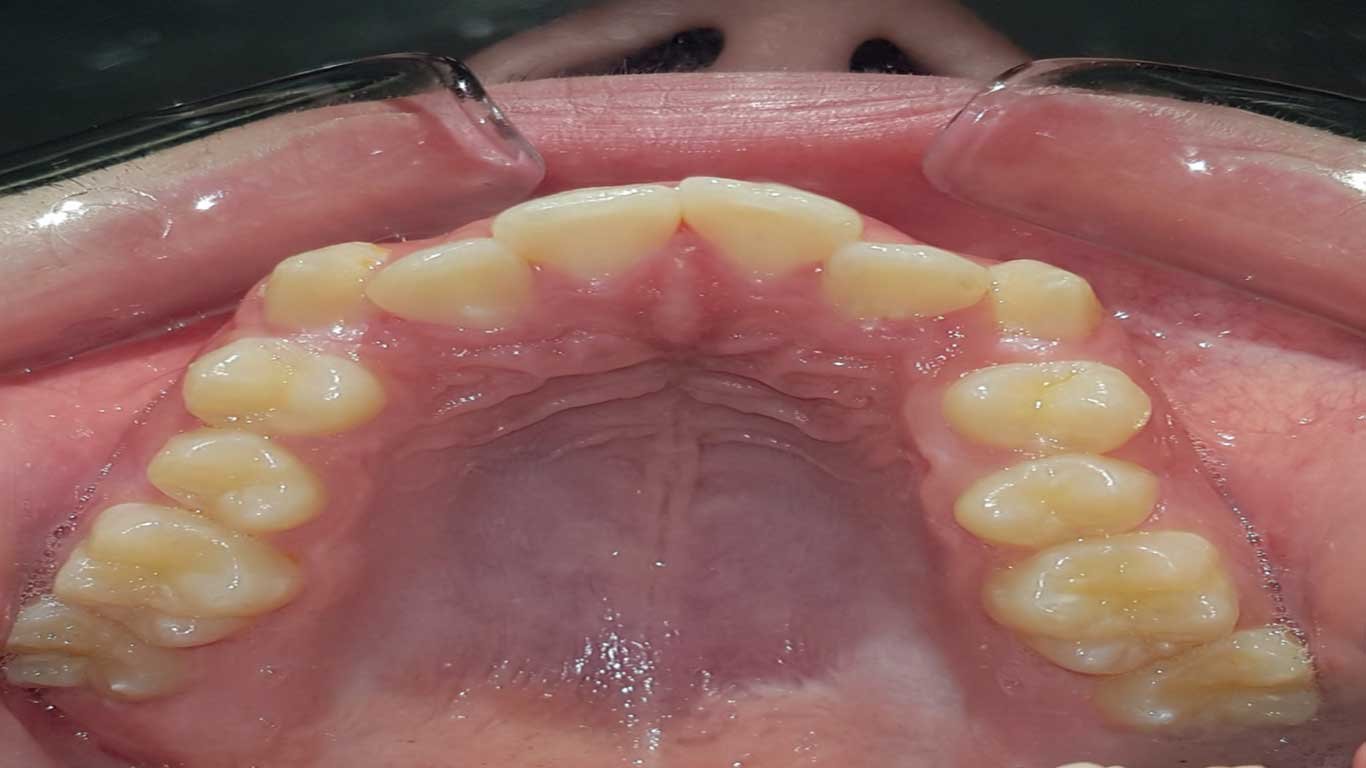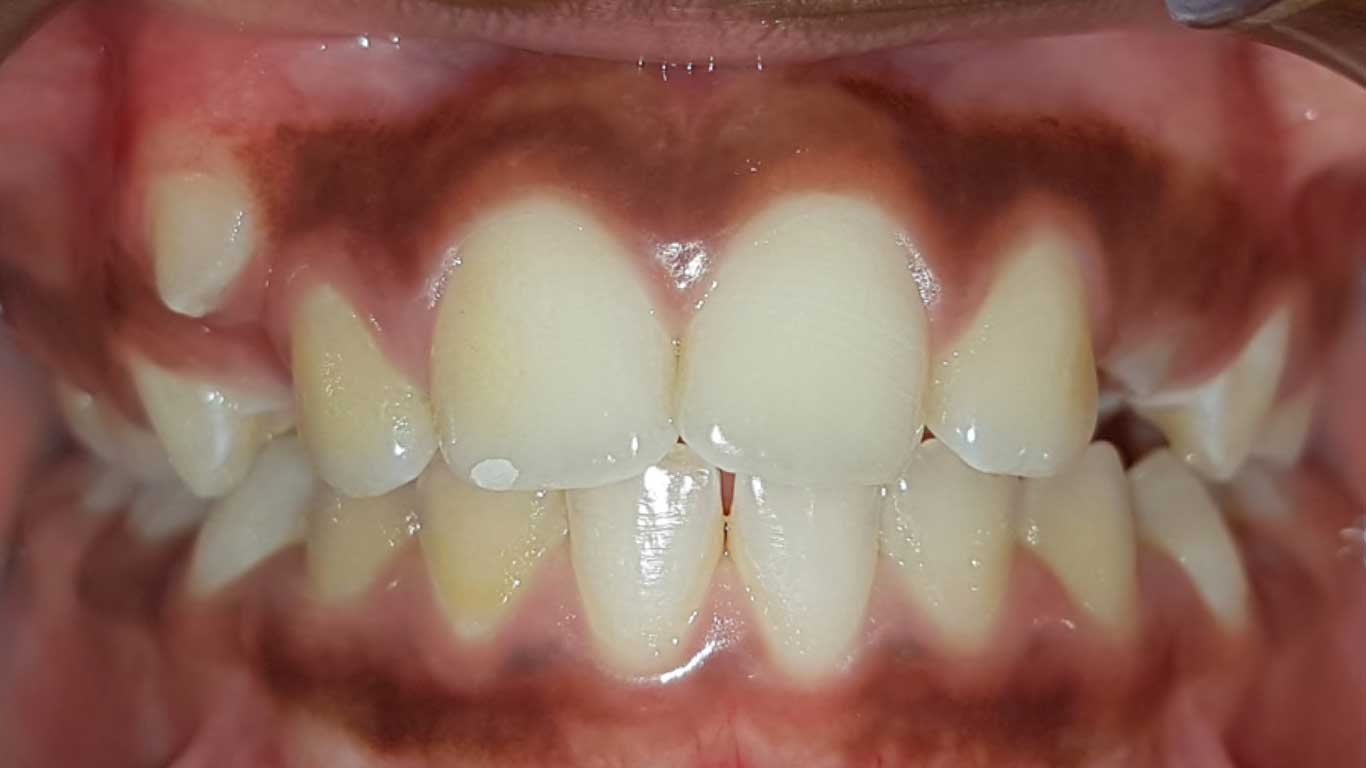Tackling Crowded Teeth
Crowded teeth happen when there’s not enough space in the mouth for permanent teeth to grow. In this case, teeth can’t develop in their proper alignment. We called this issue “dental crowding” or “overcrowding.”
Though the possibility of crowded teeth occurring in children is high, it can happen at any age due to many factors, resulting in misaligned teeth to some degree.
Both crowded bottom teeth and upper teeth can require fixing because they may cause complications later on. If the cost matters to you, we offer flexible payment plans to make the cost more affordable for you.
In this guide, we share solutions on how to fix teeth crowding for both children and adults. So, we suggest you read this guide to the end to find out your answer.
Crowded Teeth
Crowded teeth, or simply overcrowding, can be classified into three categories; the patient’s jaw size and how many teeth are crooked define the severity of the issue:
- Mild Crowding: Mild crowding refers to when one upper or bottom anterior tooth in the jaw is slightly misaligned and rotated.
- Moderate Crowding: When two or three (upper and bottom) anterior teeth are maligned.
- Severe Crowding: When the majority of the upper or lower jaw’s anterior teeth overlap.

Crooked Teeth: Causes and Myths
More common reasons that may result in crooked teeth are:
- Cleft lip and palate issues
- Thumb or pacifier sucking
- An underdeveloped jaw bone
- Larger teeth in a smaller jaw
- Having extra teeth in the mouth
- Irregular eruption of permanent teeth
- Getting older
- Losing a primary tooth too early
- If baby teeth loosen but tighten back into the gum, it prevents the proper eruption of permeant teeth. In this case, if it’s not removed, dental crowding will surely occur.
Most of these issues are visible in children; however, problems due to crowded teeth can worsen with age. As we age, our faces, including our jaws, are constantly changing. Therefore, our teeth, particularly the bottom teeth, are starting to be crooked.
Summary: However, there are many reasons for crowded teeth; genetics plays a crucial role. Typically, the primary causes are larger teeth in a small jaw and losing baby teeth too early.
Does the Eruption of Wisdom Teeth Cause Overcrowded Teeth?
Studies show that while the eruption of wisdom teeth may contribute to dental crowding, it’s not always the sole cause and may not be as significant as previously thought.
Generally speaking, potential causes are:
- Limited jaw space: Our jaws haven’t evolved to accommodate wisdom teeth, often leading to space constraints. When there isn’t enough space in the jaw, erupting wisdom teeth can push against other teeth, especially the molars, leading to crowding or misalignment.
- Angled eruption: Wisdom teeth might not erupt straight, growing at an angle that bumps into nearby teeth and disrupts their alignment.
However, research suggests some nuances:
- Minimal force: Studies indicate that the pressure exerted by erupting wisdom teeth might not be strong enough to significantly shift other teeth, especially in adults with already established dentition.
- Other factors: Crowding can also be caused by genetics, jaw development, premature tooth loss, or natural tooth movement with age.
Therefore, wisdom teeth eruption can be a contributing factor to crowding, but it’s not always the main culprit. Individual factors play a significant role.
Here’s an analogy: Imagine a crowded parking lot. While a new car entering might make things tighter, it wouldn’t necessarily cause a major collision if there’s already adequate space and the other cars are parked well. Similarly, the impact of wisdom teeth on crowding depends on the pre-existing dental landscape.
In that matter, consult with a dentist to assess your individual situation, tooth positioning, and potential crowding risks. They then offer you the best course of action, which may involve monitoring, orthodontic treatment, or wisdom teeth removal (if required).
Summary: The eruption of wisdom teeth can’t be the sole reason for dental crowding. Generally, limited jaw space and the angle of eruption of wisdom teeth might be causes of crowded teeth. However, there are some nuances; the wisdom teeth can’t be the main culprit for crowding. A dentist is the best person to evaluate your case and recommend the best course of treatment.
Do Crowded Teeth Cause Any Health Problems?
Crowded teeth can cause problems like:
- Speech difficulties
- Gum disease, or gingivitis
- Unusual wear patterns on your teeth
- Low-self esteem
- Crowded teeth can cause difficulties in cleaning between them, increasing the buildup of plaque and bacteria, and ultimately accelerating tooth decay.
Dr. Mir’s Opinion
Proper teeth alignment isn’t something related to only cosmetic issues. Crowded teeth create many challenges for proper oral hygiene, making it difficult to effectively clean between teeth and providing a great environment to grow bacteria, which results in accelerating tooth decay.
Overcrowded teeth can also contribute to mouth breathing, which can lead to further problems like dry mouth or bad breath.
Though cases related to crowded teeth vary among individuals, almost in all cases it gets worse over time, leading to more dental complications as you get older.
Additionally, poor oral hygiene, often associated with crowded teeth, can have a negative impact on overall well-being in the long run. This includes conditions like poor immune systems, gum disease, and even heart problems.
Furthermore, proper teeth alignment not only improves your appearance and smile but also your self-esteem. A confident smile can lead to better social interactions, career opportunities, and overall quality of life.
Misaligned Teeth Treatment
Depending on your specific needs, there are options for treating upper or lower teeth alignment, including braces or Invisalign.
In children, the best course of action is to use braces, and in adults, Invisalign is a discreet, alternative option for mild to moderate misalignment and specific bite issues.
Braces and crowded teeth
Braces for crowding? Is it a good approach? Typically, braces are a reliable and effective method for fixing crowded teeth, particularly for more severe misalignments.
Adults with severely crooked teeth who prefer a slightly noticeable option can choose tooth-colored braces called ceramic braces. The effectiveness of ceramic braces is exactly like that of metal braces, except that they’re less invisible than traditional braces.
Both ceramic and metal braces work by gently and slowly applying pressure to your teeth to shift them into the proper position.
However, for children, metal braces are more common because they’re more durable and require less care than ceramic braces. Moreover, ceramic braces may stain if you don’t mind the foods you eat. We also offer metal braces in different colors at York Orthodontics to make the orthodontic journey more fun for your child.

Invisaligm: Is it a good option for fixing crowded teeth?
As mentioned above, one approach for crowded teeth treatment is Invisalign if the case is mild to moderate. Invisalign aligners are a clear, removable series of plastic aligners to shift the teeth into their proper position.
These aligners are typically changed every two weeks, and the treatment duration varies depending on the severity of the misalignment. On average, mild cases take about 6 to 8 months, while moderate cases can require up to 18 months or more.
Please note that your commitment to wearing the aligners for the recommended 20–22 hours per day will significantly impact the treatment timeline.
Interestingly, Invisalign seems to work more quickly for treating crowded front teeth.
Summary: Braces and Invisalign are the two main options for fixing crowded teeth. Braces are a great option for more severe misalignments, while Invisalign can effectively treat mild-to-moderate cases.

Overcrowded Teeth: How to Prevent This?
However, genetics plays a significant role, but proactive measures can help minimize the risk of crowded teeth.
- Regular dental check-ups are key: your dentist can monitor your child’s dental development, identify potential issues early, and recommend preventive measures or early intervention if needed. This proactive approach can not only save you time and money in the long run but also prevent future complications and the need for extensive treatment.
- Address dental trauma: If your child experiences dental trauma, immediately seek the advice of a dental professional because any dental trauma, if left untreated immediately, easily results in dental crowded.
- Avoid unusual pressure: Unusual pressure on the teeth, such as thumb sucking or tongue thrusting, can ultimately lead to crowded teeth.
- Retainers: Following your orthodontist’s instructions about wearing retainers after orthodontic treatment is essential. Skipping them, even for a short period of time, can undo the progress made and lead to teeth shifting back in their original position. Remember, consistent retainer use is vital for long-term success and maintaining a beautiful, healthy smile.
Bottom Line
Our advice to all individuals is to never leave crowded teeth untreated because it may bring on some expensive complications in the long run. Regular dental check-ups are a useful key to identify the early signs of any problems and address them at an early stage, saving you not only time but money.
And lastly, if you need orthodontic treatment for yourself or a loved one, contact us right now and book your FREE consultation. Worry about treatment costs? Don’t worry; at York Orthodontics, we offer plenty of flexible payment plans to make your orthodontic journey more affordable.
FAQ
Should I need tooth removal to fix crowded teeth?
It highly depends on your specific case. If you’re born with extra teeth — a condition called hyperdontia — you’ll probably need to extract extra teeth. Sometimes, your dentist advises you to extract some normal teeth, including wisdom teeth, to make enough room for the movement of other teeth with braces.
Please notice that dental removal isn’t always an option. One of the more common ways to provide proper space for the movement of other teeth is to use spacers before undergoing braces. However, a dental professional is the only person who determines the best course of treatment based on your specific needs.
I have crowded teeth – how can braces give me the smile I’ve always wanted, and how long will my journey be?
Braces are attached to your teeth; apply gentle pressure to them and gradually shift them into the proper position. The smile you dream of is usually achievable within 1-3 years, depending on the complexity of your crowding.
How long does Invisalign take to fix crowded teeth?
The answer depends on the severity of your crowding. For mild to moderate crowding, treatment typically takes around 6 to 8 months. For moderate crowding with slight bite issues, it may take anywhere from 12 to 18 months, or even longer in some cases. Remember, this is just an estimate, and your individual timeline may vary based on your age, tooth movement, and how consistently you wear your aligners.
Is it normal to feel pain in my crowded bottom teeth?
Typically, crowding the bottom teeth can’t cause pain unless the crowding leads to tooth decay. Our advice is not to ignore pain in your teeth; visit a dental professional as quickly as you can.
What is the best treatment for mild crowding teeth?
Mild crowding teeth can often be corrected with Invisalign or traditional braces, depending on the severity. An orthodontist can assess your case and recommend the best treatment option.
What causes bottom teeth crowding?
Bottom teeth crowding can be caused by genetics, late wisdom tooth eruption, or natural shifting over time. Orthodontic treatments like braces or Invisalign can help realign them
What are the treatment options for bottom teeth crowding?
Bottom teeth crowding can be treated with Invisalign, braces, or tooth reshaping, depending on the severity. A consultation with an orthodontist can help determine the best approach.
How can lower teeth crowding be fixed?
Lower teeth crowding can be treated with braces, Invisalign, or in some cases, tooth extractions. An orthodontist can determine the best solution based on severity.

